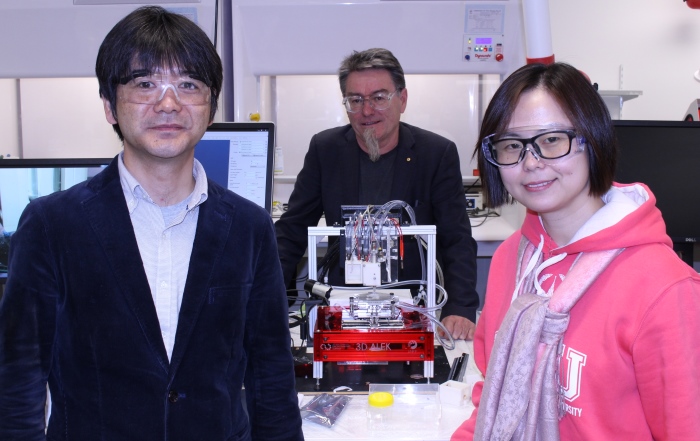News
3D printing bone tissue
Jun 28 2022
The ability to successfully print 3D organs may be a step closer, thanks to an exciting breakthrough in creating reliable vascular systems by researches from the ARC Centre of Excellence for Electromaterials Science (ACES).

In a collaborative venture between ACES lead node – the Intelligent Polymer Research Institute at the University of Wollongong, and international partner Yokohama National University, the team has determined a new approach for the fabrication of double-layered vascular-like structures to replicate vascularised tissues in vitro.
The research, published in the Journal of Bioscience and Bioengineering this week, proposes a method for the fabrication of perfusable vasculatures to support fully vascularised three-dimensional thick tissues and organs, which is essential for successful tissue engineering.
ACES Director Prof Gordon Wallace said this innovative approach is a critical breakthrough in engineering 3D printed organs and vascularised tissues for regenerative medicine applications.
“Organs such as the liver, pancreas and kidney contain vascular networks that constantly deliver oxygen and nutrient throughout the body,” Prof Wallace said.
“Part of the success of 3D-printed organs becoming a reality relies on replicating these vascular systems to ensure a reliable blood supply and guarantee effective organ transplant and function. Our team has shown that this creation of vascular systems is a real, achievable possibility.”
Yokohama National University’s Prof Junji Fukuda said he was proud of the work achieved by the team over a number of years.
“The team has demonstrated a novel approach that is scalable for three-dimensional configurations of vascular-like structures using a layer of human vascular endothelial cells covered with a dense human smooth muscle cell layer,” Prof Fukuda said.
“This work could open up new opportunities in regenerative medicine applications, and a greater understanding, investigation and potential correction of vascular diseases.”













